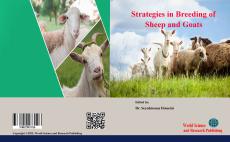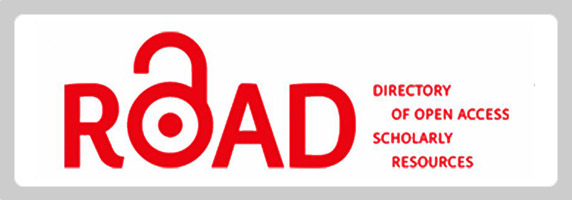Strategies in Breeding of Sheep and Goats
Keywords:
Breeding, Sheep, Goat, Animal scienceSynopsis
Several valuable livestock species, including sheep and goats, have been raised for their meat, milk, fiber, and other byproducts. The most economical animals are thought to be sheep and goats because they can be kept in any weather. Sheep and goats have gained importance in agriculture due to their ideal size, short gestation period, and plentiful milk secretion. Goats and sheep are prevalent in all production systems and have a wide range of climatic adaptations. Because of their smaller bodies than cattle, they also require less feed. This makes it simple to include small ruminants in various farming methods. They have lower production costs, including infrastructure, feeding, and treatment, and require less area, maintenance, and investment. They can coexist with other livestock in small businesses, making them appropriate for mixed farming. Goats are thought to be more cost-effective than sheep for free-range grazing in semi-arid environments. Compared to other domesticated animals, goats are less susceptible to disease. The value of sheep and goats in replacing cattle in the production of meat, milk, and dung is being acknowledged more and more in the recent century.
The contents of this book cover key areas and relevant information necessary for breeding sheep and goats and mainly focus on practical-oriented concepts of breeding. This book contains various materials suitable for students, researchers, nutritionists, scientists, veterinarians, and academicians in the field of sheep and goats.
Editor Dr. Seyedmousa Hosseini, Department of Animal Science, Islamic Azad University, Qaemshahr Branch, Iran
-------------------------------------------------------
List of Contributors
Aberra Melesse, School of Animal and Range Sciences, College of Agriculture, Hawassa University, Hawassa, Ethiopia
Adeladlew Tesema, College of Agriculture and Natural Resource, Mekdela Amba University, Ethiopia
Ahmed Seid, Jimma University, College of Agriculture and Veterinary Medicine, Ethiopia
Alebel Mulia, Department of Animal Science, Bonga University, Ethiopia
Amsale Hankamo, Department of Animal and Range Science, Dilla University, Dilla, Ethiopia
Birara Tade, School of Animal and Range Sciences, College of Agriculture, Hawassa University, Hawassa, Ethiopia
Ebtissam H. A. Hussein, Department of Genetics, Faculty of Agriculture, Cairo University, Giza, Egypt
Gutu Yemane, School of Animal and Range Sciences, Hawassa University, Hawassa, Ethiopia
Hanaiya A. El-Itriby, National Gene Bank, Agriculture Research Center, Giza, Egypt
Hassan M. Sobhy, Department of Natural Resources, Institute of African Research and Studies, Cairo University, Giza, Egypt
Ibrahim Mousa Tibin, Department of Meat Science, Faculty of Animal Production, University of Khartoum, Sudan
Ikhlas Ahmed Nour, Directorate of Animals Exports Development Centre, University of Khartoum, Sudan
Jumaa Barram Jadalla, Department of Animal Production, Faculty of Natural Resources and Environmental Studies, University of Kordofan, Sudan
Kassahun Desalegn, Jimma University, college of agriculture and veterinary medicine, Jimma, Ethiopia
Manzoor Ahmed Kirmani, Jimma University, college of agriculture and veterinary medicine, Jimma, Ethiopia
Medina Yassin, College of Agriculture and Natural Resource, Mekdela Amba University, Ethiopia
Mohamed Adam Mohamed Ali, Department of Animal Production, Faculty of Natural Resources and Environmental Studies, University of Kordofan, Sudan
Mohamed Motuma, College of Agriculture and Natural Resource, Mekdela Amba University, Ethiopia
Mona E. Abd El-Gawad, National Gene Bank, Agriculture Research Center, Giza, Egypt
Musa Ahmed Musa Tibin, Department of Animal Production and Range, Faculty of Natural Resources and Environmental Studies, University of Peace, Sudan
Neama Adam Eshag, Department of Animal Production, Faculty of Agricultural Sciences, University of Dallanj, Sudan
A. Bukhari, Department of Animal Production, Faculty of Natural Resources & Environmental Studies, Peace University, Sudan
Salah Basour Hammad Daheiya, Department of Animal Production, Faculty of Agricultural Sciences, University of Dallanj, Sudan
Samuel Tilahun, Jimma University, College of Agriculture and Veterinary Medicine, Ethiopia
Sandip Banerjee, Department of Animal and Range Science, Hawassa University, Ethiopia
Simret Betsha, School of Animal and Range Sciences, College of Agriculture, Hawassa University, P.O. Box 5, Hawassa, Ethiopia
Sintayehu Sisay Mekonen, Animal science department, Bonga university, Bonga, Ethiopia
Taddesse Moreda, College of Agriculture and Natural Resource, Mekdela Amba University, Ethiopia
Tariku Woldeyohannes, Department of Animal Science, Injibara University, Injibara, Ethiopia
Teramaj Abebe, College of Agriculture and Natural Resource, Mekdela Amba University, Ethiopia
Tesfalem Dandire, College of Agriculture and Natural Resource, Mekdela Amba University, Ethiopia
Wubante Desyibelew, College of Agriculture and Natural Resource, Mekdela Amba University, Ethiopia

Downloads
Published
Series
License

This work is licensed under a Creative Commons Attribution-NonCommercial-NoDerivatives 4.0 International License.









